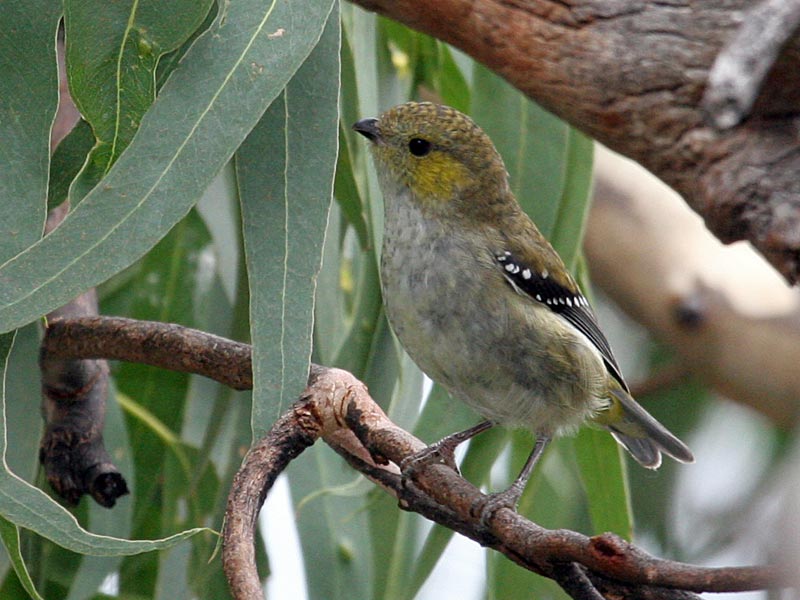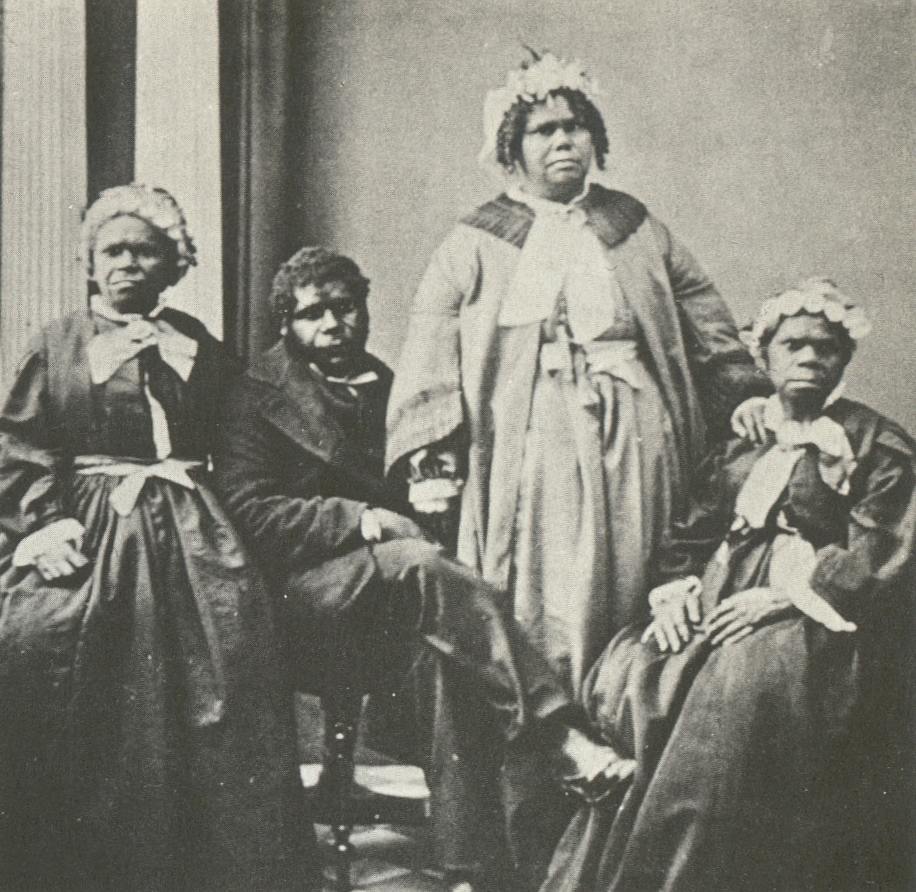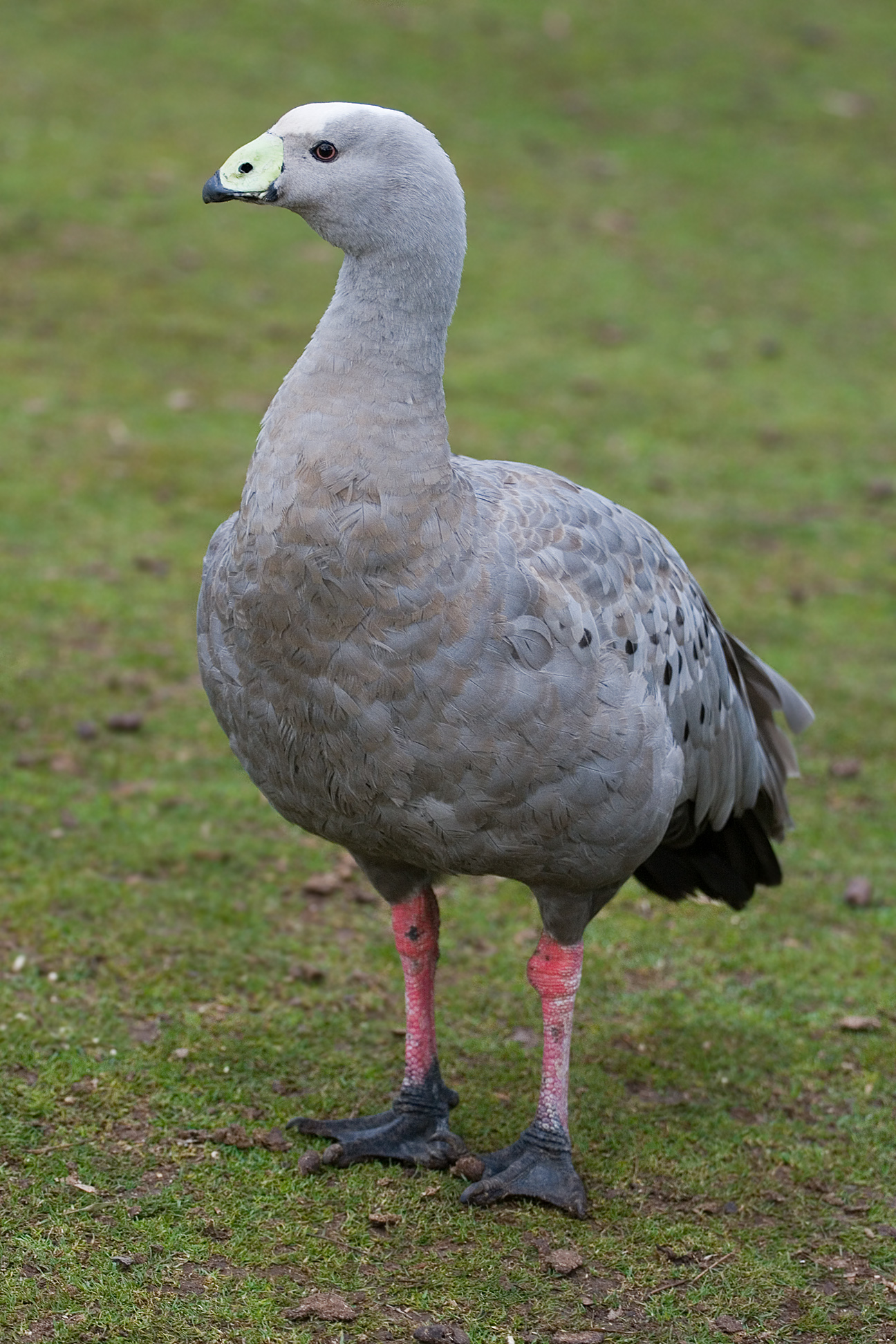|
Flinders Island, Tasmania
Flinders Island, the largest island in the Furneaux Group, is a island in the Bass Strait, northeast of the island of Tasmania. Flinders Island was the place where the last remnants of aboriginal Tasmanian population were exiled by the colonial British government. Today Flinders Island is part of the state of Tasmania, Australia. It is from Cape Portland and is located on 40° south, a zone known as the Roaring Forties. History Prehistory Flinders Island was first inhabited at least 35,000 years ago, when people made their way from Australia across the then land-bridge which is now Bass Strait. A population remained until about 4,500 years ago, succumbing to thirst and hunger following an acute El Niño climate shift. European discovery Some of the south-eastern islands of the Furneaux Group were first recorded in 1773 by British navigator Tobias Furneaux, commander of , the support vessel with James Cook on Cook's second voyage. In February 1798, British navigator Matth ... [...More Info...] [...Related Items...] OR: [Wikipedia] [Google] [Baidu] |
Matthew Flinders
Captain (Royal Navy), Captain Matthew Flinders (16 March 1774 – 19 July 1814) was a British navigator and cartographer who led the first littoral zone, inshore circumnavigate, circumnavigation of mainland Australia, then called New Holland (Australia), New Holland. He is also credited as being the first person to utilise the name ''Australia'' to describe the entirety of that continent including Van Diemen's Land (now Tasmania), a title he regarded as being "more agreeable to the ear" than previous names such as ''Terra Australis''. Flinders was involved in several voyages of discovery between 1791 and 1803, the most famous of which are the circumnavigation of Australia and an earlier expedition when he and George Bass confirmed that Van Diemen's Land was an island. While returning to Britain in 1803, Flinders was arrested by the French governor at Isle de France (Mauritius). Although Britain and France were at war, Flinders thought the scientific nature of his work would e ... [...More Info...] [...Related Items...] OR: [Wikipedia] [Google] [Baidu] |
Norfolk (sloop)
The Colonial sloop ''Norfolk'' was built on Norfolk Island in 1798 of Norfolk Island Pine. She was wrecked in 1800. :"The necessity of a vessel to keep up a more frequent intercourse with Norfolk Island, ...having been much felt by the want of various stores ...occasioned Captain Townson, the Commanding officer, to construct a small decked boat, sloop rigged, in which he sent His letters to this port..." Cumpston describes ''Norfolk'' as, “A decked longboat built at Norfolk I land” Governor Hunter quickly put ''Norfolk'' under the command of Matthew Flinders, the Sailing Master Peter Hibbs (seaman formerly on the "Sirius") Norfolk was to be used as a survey vessel. In 1798-99 ''Norfolk'' was used by Flinders and Bass to circumnavigate Tasmania – proving the existence of Bass Strait. Flinders also took ''Norfolk'' north to chart Cook's ''Morton's Bay'' (now Moreton Bay) and Hervey's Bay ( Hervey Bay). ''Norfolk'' was then used to supply produce from the Windsor Area t ... [...More Info...] [...Related Items...] OR: [Wikipedia] [Google] [Baidu] |
Hobart
Hobart ( ; Nuennonne/ Palawa kani: ''nipaluna'') is the capital and most populous city of the Australian island state of Tasmania. Home to almost half of all Tasmanians, it is the least-populated Australian state capital city, and second-smallest if territories are taken into account, before Darwin, Northern Territory. Hobart is located in Tasmania's south-east on the estuary of the River Derwent, making it the most southern of Australia's capital cities. Its skyline is dominated by the kunanyi/Mount Wellington, and its harbour forms the second-deepest natural port in the world, with much of the city's waterfront consisting of reclaimed land. The metropolitan area is often referred to as Greater Hobart, to differentiate it from the City of Hobart, one of the five local government areas that cover the city. It has a mild maritime climate. The city lies on country which was known by the local Mouheneener people as nipaluna, a name which includes surrounding features such a ... [...More Info...] [...Related Items...] OR: [Wikipedia] [Google] [Baidu] |
Oyster Cove, Tasmania
Oyster Cove is a semi-rural locality in the local government areas (LGA) of Kingborough and Huon Valley in the Hobart and South-east LGA regions of Tasmania. The locality is about south-west of the town of Kingston. The 2016 census has a population of 319 for the state suburb of Oyster Cove. History Oyster Cove was gazetted as a locality in 1968. It was originally a convict station. In 1847, 47 Aboriginal Tasmanians that had survived forced removal from the Tasmanian mainland to Wybalenna, Flinders Island, were moved to Oyster Cove. The locality was returned to the indigenous people of Tasmania in 1995 under the Aboriginal Lands Act 1995, and in 1999 Oyster Cove was declared an Indigenous Protected Area. Oyster Cove Post Office opened in 1897 and closed in 1924. It re-opened in 1927 and closed in 1964. In 1894, teacher Lily Poulett-Harris established the first woman's cricket league in Australia at Oyster Cove, The Oyster Cove Ladies Club. Geography The shore of the ... [...More Info...] [...Related Items...] OR: [Wikipedia] [Google] [Baidu] |
Ben Lomond (Tasmania)
Ben Lomond is a mountain in the north-east of Tasmania, Australia. The mountain is composed of a central massif with an extensive plateau above and high outlier peaks projecting from the mountain. The highest feature on the plateau is the unimposing summit of Legges Tor, at 1572 m, on the northern aspect of the plateau. The southern end of the plateau is dominated by Stacks Bluff, , which is an imposing feature that drops away to a cliffline above the surrounding foothills. The prominent outlier peaks of Ragged Jack (), Mensa Moor () and Tower Hill () surround the plateau. Ben Lomond is east of Launceston in the Ben Lomond National Park. Tasmania's premier Alpine skiing operations are located at Ben Lomond with downhill skiing facilities in the State. Its accessibility from Launceston, together with the existence of a ski village on the plateau make Ben Lomond an all year round favourite for tourists and hikers. Access to the village and summit can be made via se ... [...More Info...] [...Related Items...] OR: [Wikipedia] [Google] [Baidu] |
Muttonbirding
Muttonbirding is the seasonal harvesting of the chicks of petrels, especially shearwater species, for food, oil and feathers by recreational or commercial hunters. Such hunting of petrels and other seabirds has occurred in various locations since prehistoric times, and there is evidence that many island populations have become extinct as a result. More recently ‘muttonbirding’ usually refers to the regulated and sustainable harvesting of shearwaters in Australia and New Zealand. Anderson, Atholl. (1998). Origins of Procellariidae Hunting in the Southwest Pacific. ''International Journal of Osteoarchaeology'' 6(4): 403–410. These include the short-tailed shearwater, also known as the yolla or Australian muttonbird, in Bass Strait, Tasmania, as well as the sooty shearwater, also known as the titi or New Zealand muttonbird, on several small islands known as the Muttonbird Islands, scattered around Stewart Island in the far south of New Zealand. Australia Licensed commercial ha ... [...More Info...] [...Related Items...] OR: [Wikipedia] [Google] [Baidu] |
Tasmanian Aborigines
The Aboriginal Tasmanians (Palawa kani: ''Palawa'' or ''Pakana'') are the Aboriginal people of the Australian island of Tasmania, located south of the mainland. For much of the 20th century, the Tasmanian Aboriginal people were widely, and erroneously, thought of as being an extinct cultural and ethnic group that had been intentionally exterminated by white settlers. Contemporary figures (2016) for the number of people of Tasmanian Aboriginal descent vary according to the criteria used to determine this identity, ranging from 6,000 to over 23,000. First arriving in Tasmania (then a peninsula of Australia) around 40,000 years ago, the ancestors of the Aboriginal Tasmanians were cut off from the Australian mainland by rising sea levels c. 6000 BC. They were entirely isolated from the outside world for 8,000 years until European contact. Before British colonisation of Tasmania in 1803, there were an estimated 3,000–15,000 Palawa. The Palawa population suffered a drast ... [...More Info...] [...Related Items...] OR: [Wikipedia] [Google] [Baidu] |
Seal Hunting
Seal hunting, or sealing, is the personal or commercial hunting of seals. Seal hunting is currently practiced in ten countries: United States (above the Arctic Circle in Alaska), Canada, Namibia, Denmark (in self-governing Greenland only), Iceland, Norway, Russia, Finland and Sweden. Most of the world's seal hunting takes place in Canada and Greenland. The Canadian Department of Fisheries and Oceans (DFO) regulates the seal hunt in Canada. It sets quotas (total allowable catch – TAC), monitors the hunt, studies the seal population, works with the Canadian Sealers' Association to train sealers on new regulations, and promotes sealing through its website and spokespeople. The DFO set harvest quotas of over 90,000 seals in 2007; 275,000 in 2008; 280,000 in 2009; and 330,000 in 2010. The actual kills in recent years have been less than the quotas: 82,800 in 2007; 217,800 in 2008; 72,400 in 2009; and 67,000 in 2010. In 2007, Norway claimed that 29,000 harp seals were killed, Ru ... [...More Info...] [...Related Items...] OR: [Wikipedia] [Google] [Baidu] |
Cooktown, Queensland
Cooktown is a coastal town and locality in the Shire of Cook, Queensland, Australia. Cooktown is at the mouth of the Endeavour River, on Cape York Peninsula in Far North Queensland where James Cook beached his ship, the Endeavour, for repairs in 1770. Both the town and Mount Cook (431 metres or 1,415 feet) which rises up behind the town were named after James Cook. Cooktown is one of the few large towns in the Cape York Peninsula and was founded on 25 October 1873 as a supply port for the goldfields along the Palmer River.Pike (1979), p. 23.Holthouse, Hector (1967). ''River of Gold: The Wild Days of the Palmer River Gold Rush''. Angus & Robertson. Reprint 2002. HarperCollins ''Publishers'', Australia. ; pp. 27–28. It was called "Cook's Town" until 1 June 1874.Pike (1979), p. 26. In the the locality of Cooktown had a population of 2,631 people. Geography Cooktown is located about north of Brisbane and north of Cairns, by road. Cooktown is about south of Cape York b ... [...More Info...] [...Related Items...] OR: [Wikipedia] [Google] [Baidu] |
South Australia
South Australia (commonly abbreviated as SA) is a state in the southern central part of Australia. It covers some of the most arid parts of the country. With a total land area of , it is the fourth-largest of Australia's states and territories by area, and second smallest state by population. It has a total of 1.8 million people. Its population is the second most highly centralised in Australia, after Western Australia, with more than 77 percent of South Australians living in the capital Adelaide, or its environs. Other population centres in the state are relatively small; Mount Gambier, the second-largest centre, has a population of 33,233. South Australia shares borders with all of the other mainland states, as well as the Northern Territory; it is bordered to the west by Western Australia, to the north by the Northern Territory, to the north-east by Queensland, to the east by New South Wales, to the south-east by Victoria, and to the south by the Great Australian B ... [...More Info...] [...Related Items...] OR: [Wikipedia] [Google] [Baidu] |
Investigator Group
The Investigator Group is an archipelago in South Australia that consists of Flinders Island and five island groups located off the western coast of the Eyre Peninsula. It is named after by her commander, Matthew Flinders when he explored the area in 1802. The Group lies within the Great Australian Bight. All the islands except Flinders Island, and a part of Pearson Island, are within the Investigator Group Wilderness Protection Area and the Waldegrave Islands Conservation Park. Description Generally The Investigator Group is a group of islands and associated landforms that are located within an area extending for a distance of about south west from Cape Finniss on the west coast of Eyre Peninsula in South Australia. The group consists of the following islands and island groups placed in order of increasing distance from Cape Finniss: the Waldegrave Islands, The Watchers, Flinders Island, Topgallant Islands, the Ward Islands and the Pearson Isles. Waldgrave Islands ... [...More Info...] [...Related Items...] OR: [Wikipedia] [Google] [Baidu] |
Mount Chappell Island
The Mount Chappell Island, part of the Badger Group within the Furneaux Group, is a unpopulated granite island with a distinctive central hill, located in Bass Strait, lying west of the Flinders and Cape Barren islands, Tasmania, south of Victoria, in south-eastern Australia. The island was originally named ''Mount Chappelle'' by Matthew Flinders for his wife's maiden name. The island is private property, used for grazing sheep and Cape Barren geese, and is a classic example of natural habitat degradation caused by human activities. The island forms part of the Chalky, Big Green and Badger Island Groups Important Bird Area. Fauna The island's habitats have been severely modified by slashing, ploughing, grazing and burning. Short-tailed shearwaters breed there. Little penguins used to breed in large numbers but have since ceased to do so. Apart from sheep, mammals introduced deliberately or inadvertently are the house mouse, a species of rat and feral cats. Reptiles ... [...More Info...] [...Related Items...] OR: [Wikipedia] [Google] [Baidu] |








